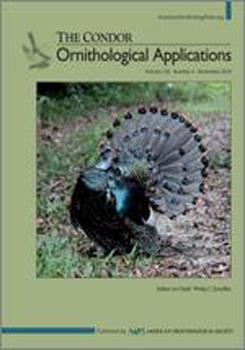Unconventional shale gas development is a rapidly expanding driver of forest loss and fragmentation in the central Appalachian region. We evaluated the relationship between breeding passerine abundances and distance from shale gas development at a long-term (2008–2017) study site in northern West Virginia, USA. We examined responses of 27 species within 3 habitat guilds: forest interior, early successional, and synanthropic. More than half of the species evaluated showed sensitivity to distance from unconventional shale gas infrastructure (e.g., well pads, access roads, pipelines). Five forest interior species occurred in greater abundances farther from shale gas development, whereas 3 forest interior gap specialists increased in abundance closer to shale gas. Early successional and synanthropic species, including the nest-parasitic Brown-headed Cowbird (Molothrus ater), generally occurred in greater abundances closer to shale gas infrastructure. We used interpolated distributions of 4 focal species to assess their spatial response to unconventional shale gas development over time. Our results indicate that breeding passerine distributions and community composition are changing with forest disturbance driven by unconventional shale gas energy development.
How to translate text using browser tools
11 June 2019
Proximity to unconventional shale gas infrastructure alters breeding bird abundance and distribution
Laura S. Farwell,
Petra B. Wood,
Donald J. Brown,
James Sheehan
ACCESS THE FULL ARTICLE

The Condor
Vol. 121 • No. 3
August 2019
Vol. 121 • No. 3
August 2019
Appalachians
avian guilds
energy development
forest songbirds
hydraulic fracturing
land-use change
Marcellus-Utica




